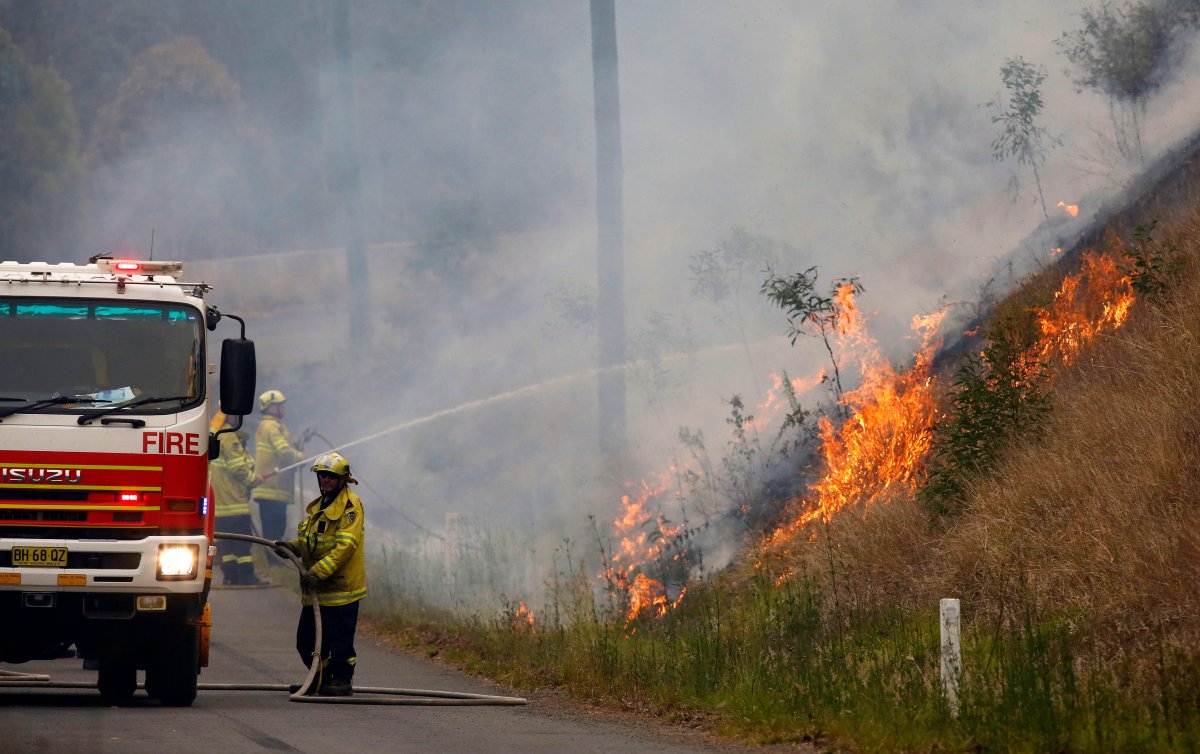Unrelenting drought has turned Australia’s bushfire season into a “catastrophic” event with no clear end in sight.

Fires are burning across New South Wales amid temperatures of 35 C, driven by low humidity and winds as strong as 80 km/h.
The dangerous conditions have so far claimed three lives, destroyed more than 160 homes and wiped out nearly 4,000 square miles of forest and farmland.
Bushfires are an annual threat during Australia’s dry summers, but this wave of fires came early, catching many by surprise.
The speed of the fires, coupled with the consistently dry conditions, has created a situation firefighters are struggling to control.
Where are the fires?

New South Wales, a coastal state, has been the hardest hit. The region is home to about six million people and located in the eastern part of the country.
For more than a week, the state has been under a “catastrophic” state of emergency declaration, which grants the Rural Fire Service the power to control resources and other government agencies during the crisis.
The “catastrophic” designation is the highest level on Australia’s scale for fire danger. The rating tells Australians in at-risk areas that their homes cannot be defended and that fleeing is the only means of survival.
“Catastrophic is off the conventional scale,” the commissioner of the NSW rural fire services, Shane Fitzsimmons, told The Guardian.
“It’s where people die.”
On Tuesday alone, firefighters were grappling with 85 fires across New South Wales. Of those, 14 were considered emergencies and burning out of control, according to Rural Fire Service.

It marks the largest number of fires in New South Wales since Friday, which saw 17 emergency fires burning, breaking a decades-old record.
In Queensland, north of New South Wales, local media reported about 65 fires burning, but there were no emergency warnings.

Get daily National news
The threat forced officials to drop pink fire retardant and water on Sydney’s northern outskirts.
Fires in the state’s northeast have been particularly severe. It’s there that three deaths were reported.
The volatile situation has forced more than 600 schools and colleges across the state to close. Of those, nine had to be evacuated.
The extent of the damage inflicted so far is not yet known.
Firefighters struggle
More than 3,000 firefighters are in the thick of the battle and nearly 80 aircraft have so far been involved in the efforts.
The army is expected to be deployed to assist in the firefighting and clean-up efforts, according to The Guardian.
Weather
After days of tinder-dry temperatures and blustery winds, relief could sweep through New South Wales and Queensland mid-week.Temperatures are expected to drop slightly, but it will likely be brief, as meteorologists anticipate another blast of hot air will threaten any progress made by the weekend.“Dry conditions will persist across Australia over the next few days. The one positive when it comes to the wildfires in NSW is that temperatures have dropped and won’t be quite as high as they have been in recent days,” said Global News Meteorologist Ross Hull.“However, after the passage of the cold front that has brought the cooler conditions, there will be some gusty winds at times — which can still fan those flames.”November may not be the rainiest month of the year for NSW, but the city has so far recorded only 15.4 mm, a far cry from the 84-mm monthly average.“There could be some isolated showers in NSW by the weekend but that also comes with the chance of thunderstorms and that lightning potential could spark new fires,” he added.A “combination of factors” have led to the “catastrophic” danger in Australia, World Meteorological Organization spokeswoman Clare Nullis told reporters in Geneva this week.She cited low soil moisture, heat, wind direction and wind speed as components of the cocktail bolstering the bushfires.Many meteorologists have blamed climate change for the growing length of fire weather season.New South Wales has endured its driest 34-month period on record, according to the Australian Bureau of Meteorology. On top of that, Australia has experienced its second-warmest January-to-October period compared to records dating back 110 years.Pointing fingers




















Comments